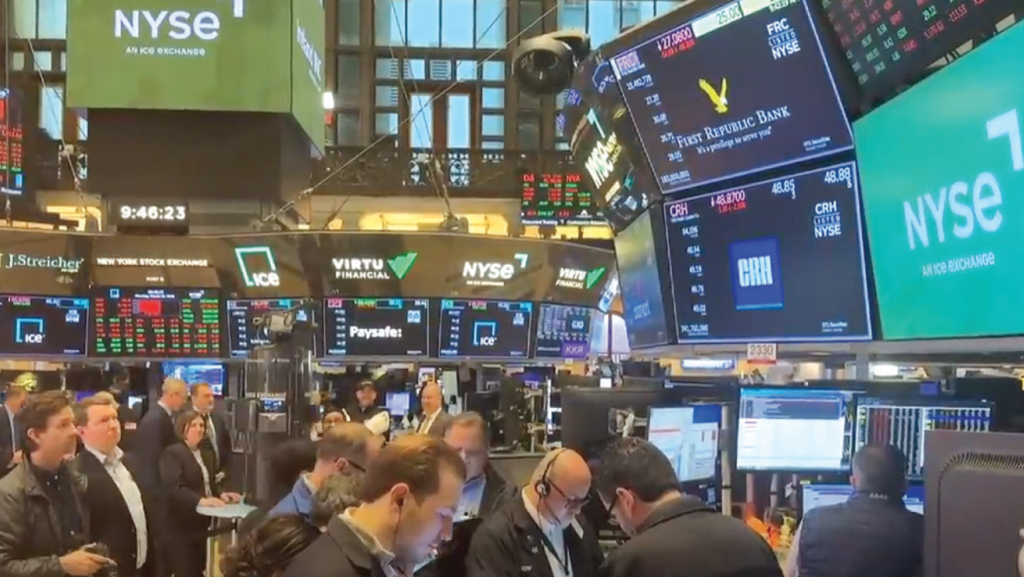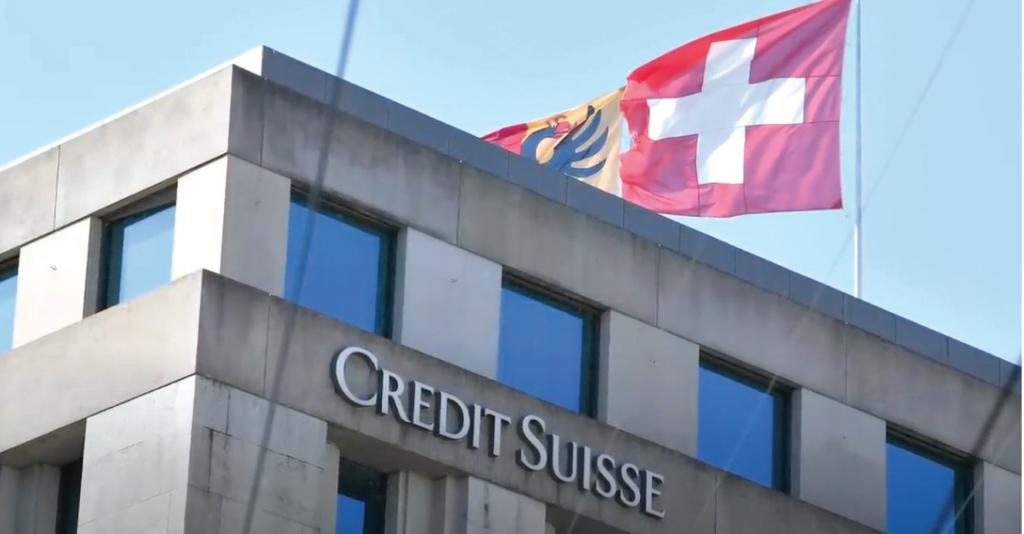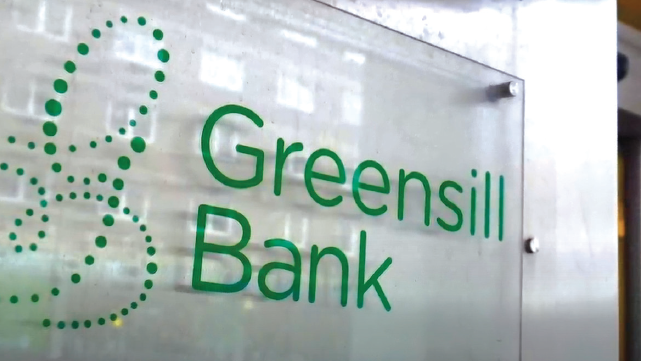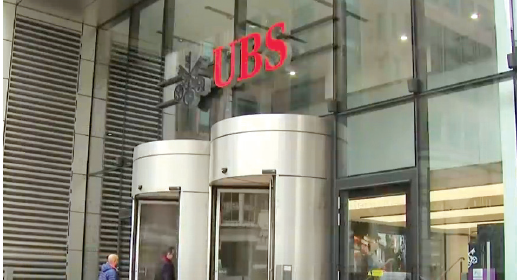Jennifer Paldano Goonewardane.

The phrase “The writing is on the wall” means a looming disaster. It has an interesting genesis from the Babylonian kingdom of yore. It was a story of leadership missteps, immorality, and breakdown of rules. Examining the 2023 banking crisis propelled by the collapse of Credit Suisse and Silicon Valley Bank reflects similar stories of poor leadership and judgment, leading to one of the worst collapses in modern banking history since the 2008 financial crisis. Could the be-all and end-all of prioritizing profits be the bane of the banking sector, where that very culture undermines the importance of honesty and credibility?
That reputation is cursory is a fact. Even the oldest institutions in the business world are not foolproof. Despite good standing, they digress and err. The most trusted institutions people choose to safeguard their money may be their nemesis. The recent banking sector collapses brought two big economies to their knees. The uncertainty and exposures highlighted by these collapses demonstrated a culture of financial impunity with which banks operate even under the regulatory radar.
The unraveling that could follow was feared when Credit Suisse and Silicon Valley Bank collapsed in March 2023. Its cascading effect on smaller banks/ regional banks and businesses that would, in turn, have a damning impact on their economies. Both banks have different stories leading to their downfall. Credit Suisse, the bank with a legacy, drove itself to the ground through mistakes and compliance failures over many years, an end mired by years of finger-pointing and controversial dealings. Even after making the Forbes list of America’s Best Banks, emerging at 20 for five years in a row, mismanagement, incompetency, and political lobbying led to the fall of Silicon Valley Bank. Together, their individual stories help build a case for stable governance in financial institutions, where honesty, integrity, and compliance should go hand in hand with skillful and efficient management and competency. One without the other is detrimental, as these two cases highlight.
Credit Suisse – The Swiss Monarch
The saying that reputation precedes is true for Credit Suisse. The grand old Swiss banking lender founded in 1856 was the cornerstone of a burgeoning Swiss economy, helping build its railway system while bumping up industrial development. Its expanding global presence and visibility, its creditable role in assisting Europe to navigate the devastation of World War II, catapulted Credit Suisse into an eponymous name in banking globally. Its rise that began in the 19th century was solidified in the first half of the 20th century, sealing its reputation as a global icon in the financial services sector.
As the bank’s fortunes grew, it embraced a new business model that pitched a growth trajectory at all costs, ignoring risks. They pursued the new pitch of maximizing growth and profits at the expense of regulatory compliance.
Undeniably, Credit Suisse had an image of confidence borne out of a remarkable journey through global vicissitudes. The legacy and heritage made it easier for Credit Suisse to be less under the radar and cloak itself in its gained prestige over the years. Credit Suisse exuded an irreproachable quality that belied the dark side of its operations.
The world read about the full scale of the bank’s ruthless conduct over many years only when it was on the cusp of collapse. Credit Suisse was the banker to the ultra-rich, dictators, corrupt leaders, human rights abuses, and drug rings. It had aided money laundering
and hidden millions of dollars in deposits of ill-gotten money. The bank would always downplay allegations but, upon evidence, cooperate with investigators leading to hefty fines and several top-level resignations. In 2009 Credit Suisse was fined $536 million for violating US sanctions against Iran, including Libya, Sudan, Burma, and Cuba, between 1995 and 2007.
The most potent accusation against the Swiss lender was its enabling role in helping wealthy clients evade taxes by failing to report secret offshore accounts. In 2014, the bank paid $2.5 billion as a fine to the US Justice Department after pleading guilty to aiding and assisting US taxpayers in filing false income tax returns and other documents with the IRS. Subsequently, a Senate Committee found that the Swiss lender had concealed more than $700 million from the government in violating a 2014 plea deal between the bank and the US Department of Justice. US authorities continued to uncover more deceitful practices of helping wealthy families evade tax. In February 2022, it came to light that Credit Suisse had put away over $100 billion in total deposits of the ultra-rich with questionable reputations and earnings. The bank stood accused of destroying and concealing records and transactions of undeclared accounts.
What is baffling was the bank’s ability to continue its criminal conduct despite convictions and fines. Credit Suisse was destroying itself from the inside, its structures resembling cancer that, rather than being contained initially, was being nurtured unabated.
However, as scandals rocked the bank, it would try to turn a new leaf with a new team of executives, which was often short-lived.
The spying scandal involving Credit Suisse sounds right out of a thriller. In March 2020, Credit Suisse stood accused of spying on seven executives between 2016 and 2019. The mysterious death of its private investigator hired by its executives, allegedly by suicide, further dented the bank’s reputation. The fallout was too significant to ignore, triggering another wave of resignations amid denials by its CEO of commissioning the espionage pogrom.
Meanwhile, imprudent investments led to more woes for the veteran banker. The default by Archegos and the bankruptcy of Greensill in 2021, in which Credit Suisse had invested, were found to be triggered by management and control failure. The Archegos default cost Credit Suisse to lose $5.5 billion. Investigations later revealed that Credit Suisse had invested in these firms and allowed them to engage in risky activities. As noted by a report, the business had focused on maximizing short-term profit and failed to rein in and enable Archegos’ insatiable appetite for risk-taking. These led to Credit Suisse losing $15 billion in a single quarter.
The bank’s proclivity to engage in backdoor dealings continued. This time it was Mozambique. Known as the tuna bond case, when it finally came to light in 2021, it emerged as one of the most high-profile scandals, where the bank colluded with Mozambique authorities to provide a backdoor loan of $2 billion, supposedly for the purchase of a tuna fishing fleet, part of which had allegedly ended up distributed as kickbacks among Credit Suisse bankers and government officials. At this point, Mozambique was receiving financial aid from the IMF and other agencies, which were ignorant of the deal. When the IMF discovered the undisclosed government loan, it stopped support to the country, triggering a currency collapse and economic crisis. As if scandals came knocking at its door, the bank’s
reputation was in shambles as recently as 2022, when the Swiss criminal court found the bank guilty of money laundering in no less than for a Bulgarian drug ring. The court accused the bank of not doing enough to prevent the drug ring from profiting from its illegal operation.
In addition, Credit Suisse had to pay half a billion dollars in compensatory damages over fraud at its insurance arm in Bermuda, leading financial advisors at the end of 2022 to urge clients to pull their deposits out of the bank. A rumor that Credit Suisse was in distress led to a customer deposit outflow of more than $100 billion by the end of 2022. Their response? Sack the old crew and install a new CEO and a new restructuring plan.
The pandemic is mostly behind, and 2023 began on a new challenging trajectory. The world was preparing to face an altered landscape of rising inflation and increasing rates. Essentially, central banks worldwide were preparing for a massive global economic recession and downturns spurred by the pandemic and its aftermath and now exacerbated by the war in Ukraine. Meanwhile, amid an unfolding new year of unprecedented global economic challenges, Credit Suisse, in its delayed annual report in March 2023, admitted to material weaknesses in its financial controls, reporting an annual loss of $7 billion.
Trust and confidence are the mainstays of the financial services industry. As withdrawals increased and stock values plummeted, Credit Suisse had to contend with a more significant public bombshell of a divorce announced by the Saudi National Bank, one of its most prominent financiers. The Saudis would no longer inject liquidity into the embattled Swiss banks. That widened the fissure further, impacting stocks significantly and plunging their value by 24 percent in a day.
As Credit Suisse’s fortunes continued their downward spiral unabated, the Swiss National Bank (SNB) had to respond. There was a great deal at stake. The Swiss economy and its reputation were at risk. The SNB wanting to boost public confidence in Credit Suisse, injected $50 billion into it, although the move did not improve the bank’s fortunes. As the dramatic fall of Credit Suisse unfolded in 2023, major financial institutions chose to cut ties with the embattled lender. Client withdrawals amounting to $10 billion per day said it all. Finally, Credit Suisse’s competitor UBS agreed to buy over the distressed firm for $3.2 billion, with the Swiss authorities swooping in to ensure that the very financial foundations of Europe remained running by preventing a total collapse and ruination of Credit Suisse, which was a reasonable outcome for the firm given its missteps and criminal tactics of the past.
In March 2023, after 163 years of operations, a once prestigious bank considered the cornerstone of the Swiss economy ceased operations with its head bowed down, reputation in tatters, and leaving a trail of scandals that made the financial industry cringe in disbelief. The fact is that Credit Suisse had a reputation of prestige, of elite standards that made it seemingly invincible. Because the bank and its name resonate with the heart of the Swiss economy, having played a pivotal role in its meteoric rise in Europe, the SNB and government intervention were paramount.
While criticisms remain of SNB’s unprecedented mediation to save Credit Suisse, the intervention is justified to protect the Swiss economy and its banking sector. However, the State’s involvement in sealing the deal is under scrutiny. According to reports, rather than the executives of Credit Suisse and UBS negotiating the agreement, the Swiss government and the SNB arranged the deal behind the scenes. Many decried the agreement as wrong; UBS being a public company, had failed to obtain shareholder consent. Concerns were raised in the Swiss Parliament as well. The deal has eliminated UBS’s most significant competitor and solidified its position as the biggest bank in Switzerland. However, UBS cannot overlook the possibility of consequences from the buy over, given Credit Suisse’s reputation for breaking the rules to aid unscrupulous elements. In this ongoing saga of Credit Suisse-centered scandals, the US Department of Justice is investigating its role in helping Russian oligarchs evade sanctions; while going by its records, the industry would not be surprised that it wouldn’t resort to anything extreme to expand its margins.
What is at risk, as pointed out by analysts, is the risk to the Swiss financial system’s reputation as a result of this deal because it is likely that with time many more skeletons may appear from the Credit Suisse cupboard, much to the embarrassment of the UBS, leading to a possible decline in confidence, as half of the Swiss population had expressed its displeasure at the deal.
Silicon Valley Bank – The Darling of Tech Startups
Unlike Credit Suisse, which knowingly engaged in fraudulent behavior to expand its margins, Silicon Valley Bank (SVB), founded in 1983, paid the price of putting all its eggs in one basket- a case of mismanagement and incompetency. Like its Swiss counterpart, SVB had grown over the years to become the 16th largest bank in America, with $209 billion in assets in 2022.
SVB had built its reputation among venture capitalist-backed tech startups as the go-to specialized bank. The pandemic changed the firm’s fortunes in an environment where tech companies emerged at the forefront as technology became pivotal in navigating a restricted environment. On top of this, the economic climate was conducive to their growth. Interest rates were low. The tech industry seemed ready for heightened growth as investors were willing to channel money into promising startups.
The companies were looking for a place to hold their renewed flow of investment. SVB, favored among venture capitalist-backed startups, had an influx of cash in deposits. SVB’s asset value increased exponentially with the injection of new startup funds. The new cash flow had to be invested by the bank elsewhere for greater returns, old long-term bonds being its choice. SVB chose to invest in old long-term bonds betting on the higher interest rate attached to them instead of buying newly issued long bonds in a low-interest rate regime. Hence the value of long-term bonds tends to increase due to increased demand for them, which gives its holder the advantage of selling at high prices and making a good return on investment. On this premise, SVB invested $80 billion of tech company deposits on older long-term bonds and other securities. The bank profited from the investment, earning higher interest on bonds than the lower interest paid for the deposits.
While everything seemed smooth sailing, economies worldwide were coming to a reckoning that the pandemic indeed did impact them. As inflation fears were gaining momentum globally, the prognosis for the future did not seem to augur well. The Feds estimated that rising inflation would be a transitory trend, a mistaken deduction. Then, as inflation didn’t seem to abate, the Feds increased rates to control inflation. The Feds accelerated the process to cover the loss incurred by its wrong judgment on inflation. The high-interest rate regime flipped the status quo upside down. New long-term bonds gained traction while the old ones began declining in value. This scenario became the factor that unraveled SVB’s grand plan for the long term.
The State’s involvement in sealing the deal is under scrutiny. According to reports, rather than the executives of Credit Suisse and UBS negotiating the agreement, the Swiss Government and the SNB arranged the deal behind the scenes.
As the value of older long-term bonds began decreasing, it led to a decline in demand, causing their prices to plummet. Amid this unexpected volcanic eruption, SVB still held long-term bonds worth billions. By the end of 2022, there were 15 billion dollars in unrealized losses from the fall in long-term bond prices. Under normal circumstances, the bank could have held onto the bonds until the price value rose, but the events in 2022 were different. In a higher interest rate environment, tech startups were struggling to secure financing, and hence as credit began to dry up, they had to turn to their deposits to fund operations. Now SVB’s main clients were startups. So naturally, when the crisis hit, and these startups had to turn to use their cash, deposits began to slow down, falling from a value of $189 billion at the end of 2021 to $173 billion at the end of 2022. SVB had to sell some of its long-term bonds to cover large withdrawals. The bank managed to deal with the withdrawals for a period buttressed by its strong liquidity. However, there was a change in depositor behavior as well. Depositors were leaving the bank. In March 2023, SVB announced the sale of its entire liquid bond portfolio worth over $21 billion. The SVB took a $1.8 billion loss from the sale.
The bank was mired in controversy as investors and depositors feared that the bank was running into solvency issues, leading to a drastic drop in share value, nearly 60 percent, in one day. As issues mounted, venture capitalists advised startups to pull their money out of SVB, worsening the problem. By March 9th, customers had withdrawn $42 billion, leaving the bank a negative cash balance of $958 million. The heavy withdrawals had led to a crash in the bank’s internal systems, creating more fear. On March 10th, authorities suspended trading SVB shares as their value plummeted drastically. With no one to bail it out, the FDIC shut down the bank.
There are many plausible explanations for the bank’s downfall. SVB’s decision not to diversify its investment portfolio by investing heavily in old long-term bonds was shortsighted. At the same time, the management had failed to adjust quickly to a new environment of
rising interest rates. Analysts find that rather than selling off its old long-term bonds at a lower value, the bank should have exchanged them for high-interest-yielding bonds to minimize losses. Analysts contend that SVB’s downfall got heightened by its imprudent and swift sell-off of its old long-term bonds one after another, which the SVB, a relatively more minor bank with a limited portfolio, had to choose from, as depositors came knocking on its door for their cash. This outcome stood in contrast to what the larger banks had to experience. Larger banks demonstrated greater resilience owing to their diverse funding sources, making them less vulnerable to such shocks with greater liquidity strength. Unlike smaller regional banks, the big banks in the US could withstand liquidity shocks that banks like SVB could not handle, leading to its premature sale of long-term bonds.
Larger banks demonstrated greater resilience owing to their diverse funding sources, making them less vulnerable to such shocks with greater liquidity strength.
At the height of the crisis, the bank was without a chief risk officer, a position kept vacant for eight months from April 2022 to January 2023, depriving the institution of a competent executive to oversee the required strategy and change internally as the external environment changed to a high-interest rate regime. So severe was the oversight that the bank resorted to imprudent decisions cutting the path to its downfall. There were credibility issues blighting SVB as the telltale signs of an impending disaster were visible, with the CEO of SVB being the former CEO of disgraced Lehman Brothers at the time of its crash. Into this equation comes the sale out of $4.4 million worth of combined stocks of the firm by its CEO, CFO, and CMO weeks before the decline of SVB, a move that demands answers such as whether these executives had pre-knowledge of the collapse. Moreover, in a surprise move, its employees received bonuses ranging from $12,000 to $140,000 hours before its crash. Their actions augur many questions and speculations about what could have prompted such action in the eleventh hour. Maybe the execs knew that the writing was on the wall and that a crash was imminent. The crash led to shareholder litigation for fraud, accusing the firm of failing to disclose how rising interest rates could undermine its business model.
The CEO of SVB is also accused of political lobbying to exempt financial institutions with assets less than $250 billion from the Dodd-Frank Act, which Congress passed in the aftermath of the 2008 financial crisis to make the financial system safer for consumers and taxpayers. In 2018, Congress passed a bill exempting banks with less than $250 billion in asset value from the structures of the Dodd-Frank Act. Analysts contend that had they not passed the new bill of exemption, SVB would have been under better supervisory controls leading to less risky behavior. Regulatory frameworks in the banking system are tantamount to ensuring stability and productivity in institutions operating in the financial ecosystem.
Credit Suisse was a banking giant in its own right and bore a heritage that the Swiss Government and the SNB thought was worth saving and hence intervened to save the more than a-century-old bank from closing its doors permanently. But it was different for smaller banks like the SVB. Public panic arising from an impending disaster in smaller banks leads to a crisis. On the other hand, limited portfolios of such small banks give rise to internal problems. That gets compounded when their decisions need more foresight and competency. The real threat to the future is the threat to an entire economy when smaller banks run into crises and eventually collapse. But the larger question that looms after this is whether the industry has learned anything from the past and, examining the most recent disasters in banking, whether they will pause to rethink their business models and change their image of money-hungry hawks who stop at nothing for a few more bucks.









